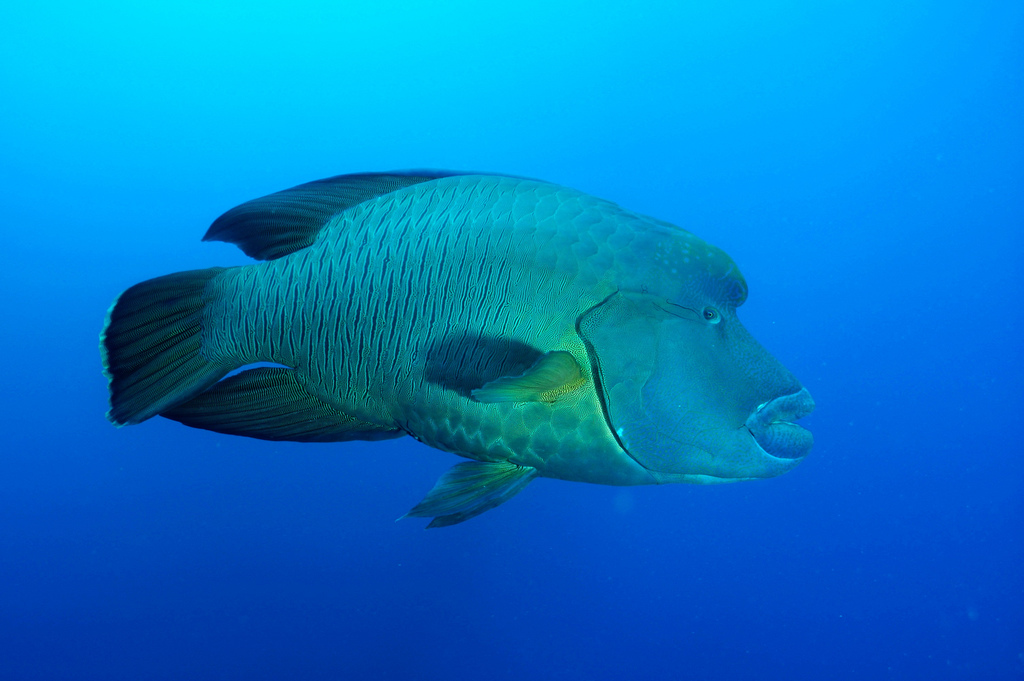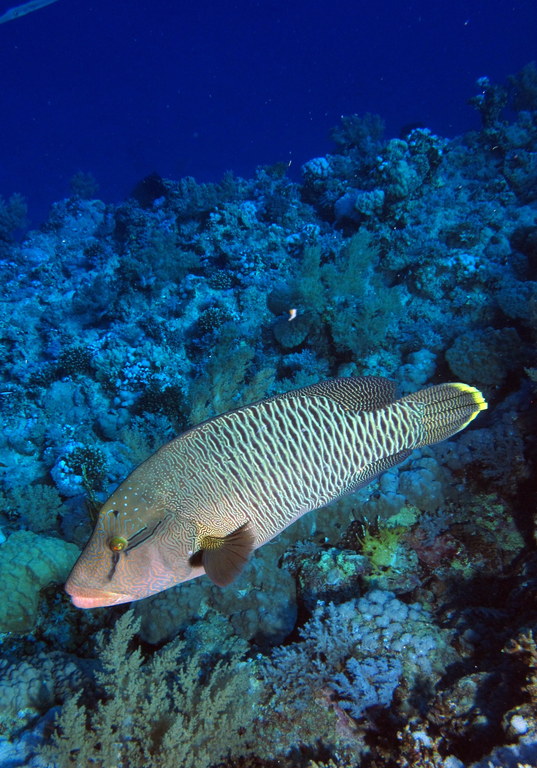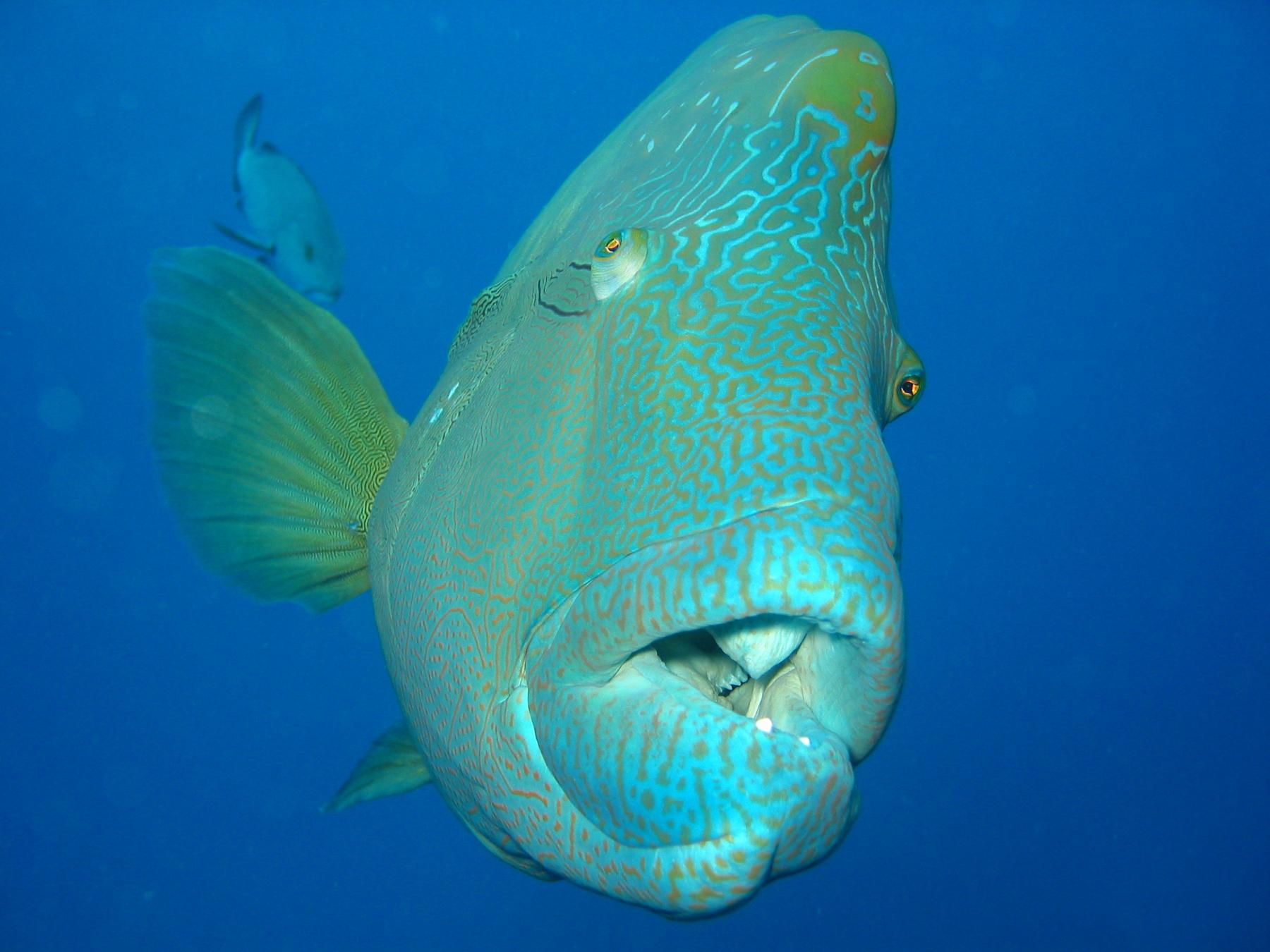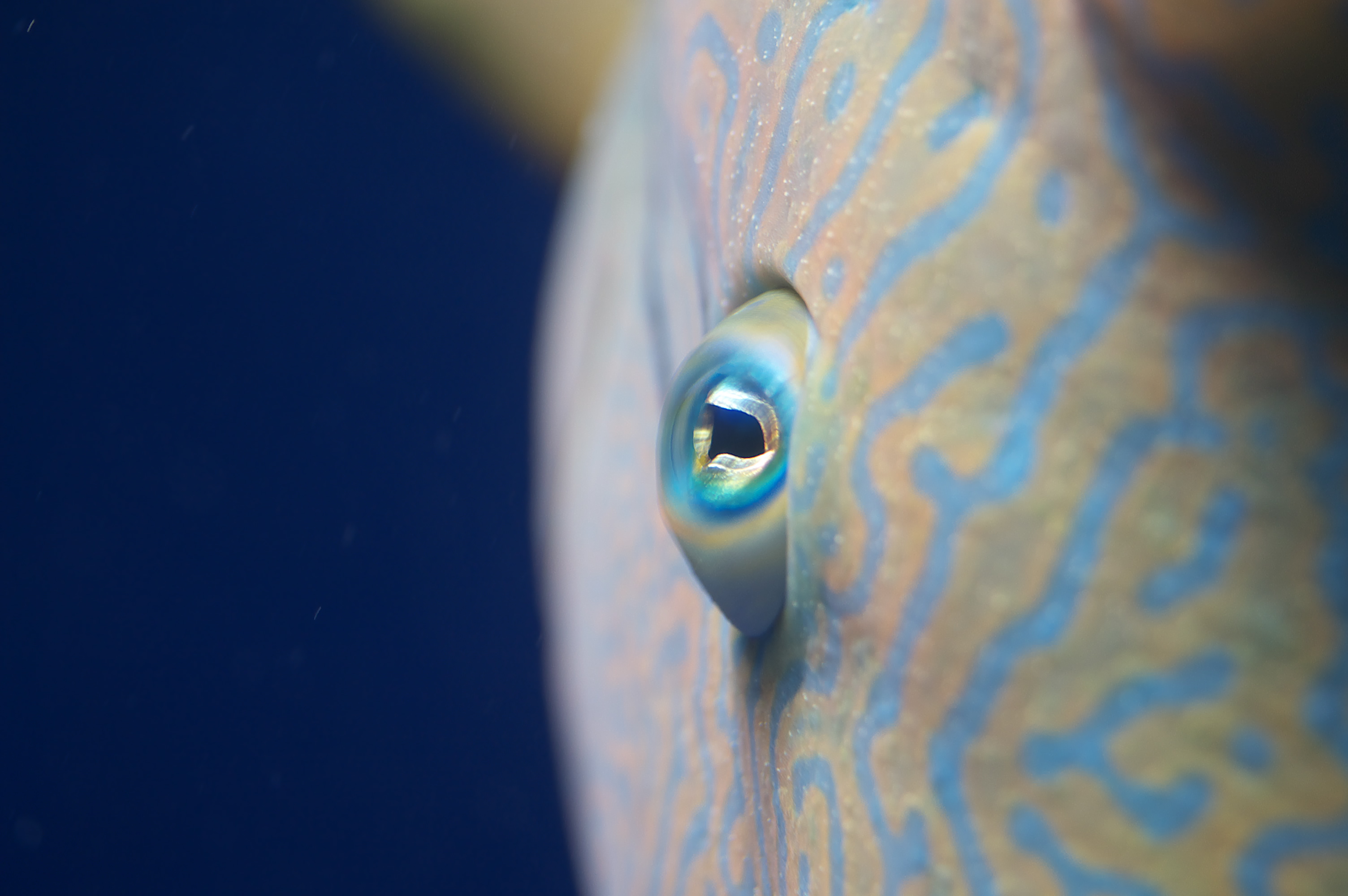Another coral reef fish I'm hoping to see in Fiji (on my upcoming expedition with Joshua Drew) is the Napoleon wrasse or humphead wrasse (Cheilinus undulatus). They are fish that are especially close to my heart because I spent four years studying them for my PhD.
Here's a splendid male:
So I'm biased – clearly – but Napoleons really are brilliant. And these days they are sadly becoming a rare sight.
To study them, I spent months living on a remote atoll in the South China Sea, one of the Sprately Islands called Layang Layang (or Swallow Reef). There's a Navy base and a dive resort on the isand (where we occasionally escaped for a cold beer) but I camped on a patch of rocky ground beside the runway, sleeping under the stars and retreating inside a rusty shipping container when it rained.
I was there to study an incredible natural event: Napoleon wrasse having sex. Because trust me, these fish have spectacular and very organized love lives.
When the moon is new, they gather together in a huge aggregation, each time in the exact same spot on the reef. There was a single, dominant male (he’s huge – up to 6 feet long). He stakes out his territory and jealousy guards it from other males. Then the smaller females show up. Dozens of them.
These are normally solitary fish so to see a big shoal of them is truly extraordinary. The females mill around in the mating arena, while the male shows off, looking big and impressive. Then one by one, he leads the females off into the big blue open water. They swim side by side, he rubs against her. And then all of a sudden they rush upwards together. She releases her eggs into the water, he releases a cloud of sperm. As soon as they’ve finished, she scarpers, and he goes right back to the reef to pick up another mate.
Or… he comes back to the reef to find me, hanging around in my scuba kit, in his territory, and he charges right at me, flashing his pointy teeth.
Luckily that time he was just trying to spook me and I had a big underwater camera to hide behind, because what I was doing was filming them. In particular, I was documenting the females’ faces. After months of diving with these amazing fish, and hours analysing my underwater footage, I showed for the first time that the intricate patterns on their faces are unique to each individual, like a fingerprint.
That led me to discover that females in fact return to mate several times each month. And that let me work out accurately how many spawning females there are in the whole population.
If the females survive long enough, they will return to that same spawning site but in a rather different role. In time, they undergo a sex change, and turn into males. They grow big bumps on their head and big rubbery lips. And that’s one of the main reasons why sadly there are now fewer of these fish in the wild than there were a few decades ago.
Because in China, Napoleon wrasse are a delicacy, their lips in particular. They’re worth hundreds of dollars a plate. I wrote a paper in the journal Science, showing how fisheries across the Indian and Pacific Oceans are strip-mining the seas of Napoleon wrasse and other, highly prized coral reef fish.
And in fact, a while after I left that South China Sea island I heard the depressing news that the Napoleon wrasse that I’d studied, each individual that I’d learned to recognize, had been caught and carted off to restaurants.
And I don’t suppose many of the people eating those fish knew what extraordinary lives they’d led.
Napoleon wrasse are now strictly protected in Fiji under the national Endangered and Protected Species Act. So I'm really hoping I'll get to see some on my trip. It's been a while since I've gazed at the beautiful stripey face of a giant sequential hermaphrodite.
#CUinFiji
Photos by Derek Keats, tezl, Macorig paolo, and Stephen N Maher.




Leave a Reply